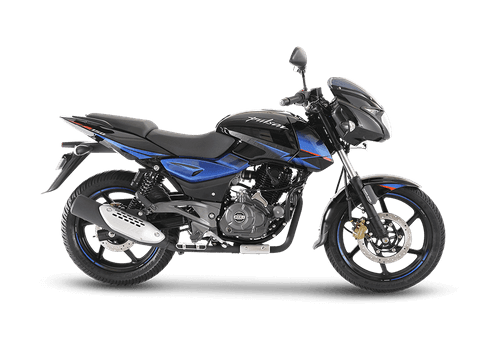Bajaj Auto is one of the leading motorcycle manufacturers in India. The OEM has a large market share and the longest bike line-up as well. The Pulsar 150 and the Avenger 160 are two of the best-selling motorcycles from Bajaj Auto.
This post in the following sections will shine a light on the differences Between Bajaj Avenger Street 160 vs Bajaj Pulsar 150 Twin Disc.
Here goes.

The first factor that differentiates the Bajaj Avenger Street 160 vs Bajaj Pulsar 150 twin disc is the bodywork.
Additional Read: A Quick Comparison Between Bajaj Pulsar 150 Vs. Avenger Street 160
The Avenger Street 160 is a compact cruiser bike. The bike has a low-slung saddle and a long wheelbase. The footrests on the bike are also forward-set. Hence, it is easy to state that the bike is one of the most comfortable cruisers in India. The easy-to-reach and wide handlebar also helps keep riders comfortable on long bike trips.
The Bajaj Avenger Street 160 is powered by the same engine that one can find in the Pulsar NS160.
The stroke and bore of the engine have been kept unaltered. This means that the peak power and torque outputs of the engine continue to be 15bhp and 13Nm. The power and torque outputs are perfect for city commutes. On highways, the bike does well up to 100 KMPH. Beyond that, the engine of the motorcycle seems to be a bit out of breath. The reason is simple. The engine might be the same that powers the NS160. However, the engine on the Avenger 160 comes with two valves. The engine that comes with the NS160 comes with 4 valves. The absence of two additional valves is the reason why the Avenger 160’s engine feels out of breath post 100 KMPH.
The engine offers a punchy low range. The mid-range performance of the engine is impressive. The top range is not that enthusiastic, to be honest. On top of this, the engine vibrates a lot when pushed beyond 100 KMPH.
The suspensions on the Avenger 160 are set on the soft setting. It means that the bike remains stable even when the rider is cruising at 100+ KMPH. However, due to its extended front end, cornering on the bike should be done at controlled speeds. The front-set footpegs of the bike allow riders to seamlessly change gears and apply the rear brake.
The Avenger range has been on sale for more than a decade. Hence, it is no surprise that the Avenger 160 has onboard tech that is pretty basic. The latest iteration of the bike comes with rear drum brakes. The front wheel however gets a disc brake which works in tandem with an ABS sensor.
That’s it.
If one is looking for cutting-edge technology then unfortunately this motorcycle does not offer any.
However, isn’t that what a cruiser motorcycle is supposed to be!?

Pit Bajaj Pulsar 150 Twin Disc vs Bajaj Avenger Street 160 and the former is a commuter bike. The latter is a compact cruiser motorcycle.
Other factors that differentiate the Pulsar from the Avenger are mentioned below.
The Pulsar 150 is powered by a 150 CC air-cooled single-cylinder fuel-injected BS6-compliant engine. The engine is tuned to deliver a linear performance. The peak power and torque outputs of the engine are 15 bhp and 12 Nm respectively. The engine is mated to a 5-speed gearbox. The transmission is equipped with a wet multi-plate clutch.
Additional Read: Bajaj Avenger Street 160 Vs Pulsar NS 160 - A Quick Comparison
The Pulsar 150 comes with a traditional front fork suspension. The rear suspensions are two standard spring-in-damper units. The damper units come equipped with gas reservoirs for additional dampening. The suspensions of the bike are set on the medium setting. The latest iteration of the bike comes with an increased front suspension travel factor. The rear wheel suspensions have also received suspension travel and dampening enhancements.
Bajaj Pulsar 150 Twin Disc comes with front and rear disc brakes. The ABS sensor however is paired with just the front disc brake. One can even get this bike with front disc and rear drum brakes. The overall braking performance of the bike, irrespective of the trim is impressive.
The bike comes with basic features. They are mentioned below.
For more details about these two Bajaj bikes, head over to a Bajaj bike dealership today.